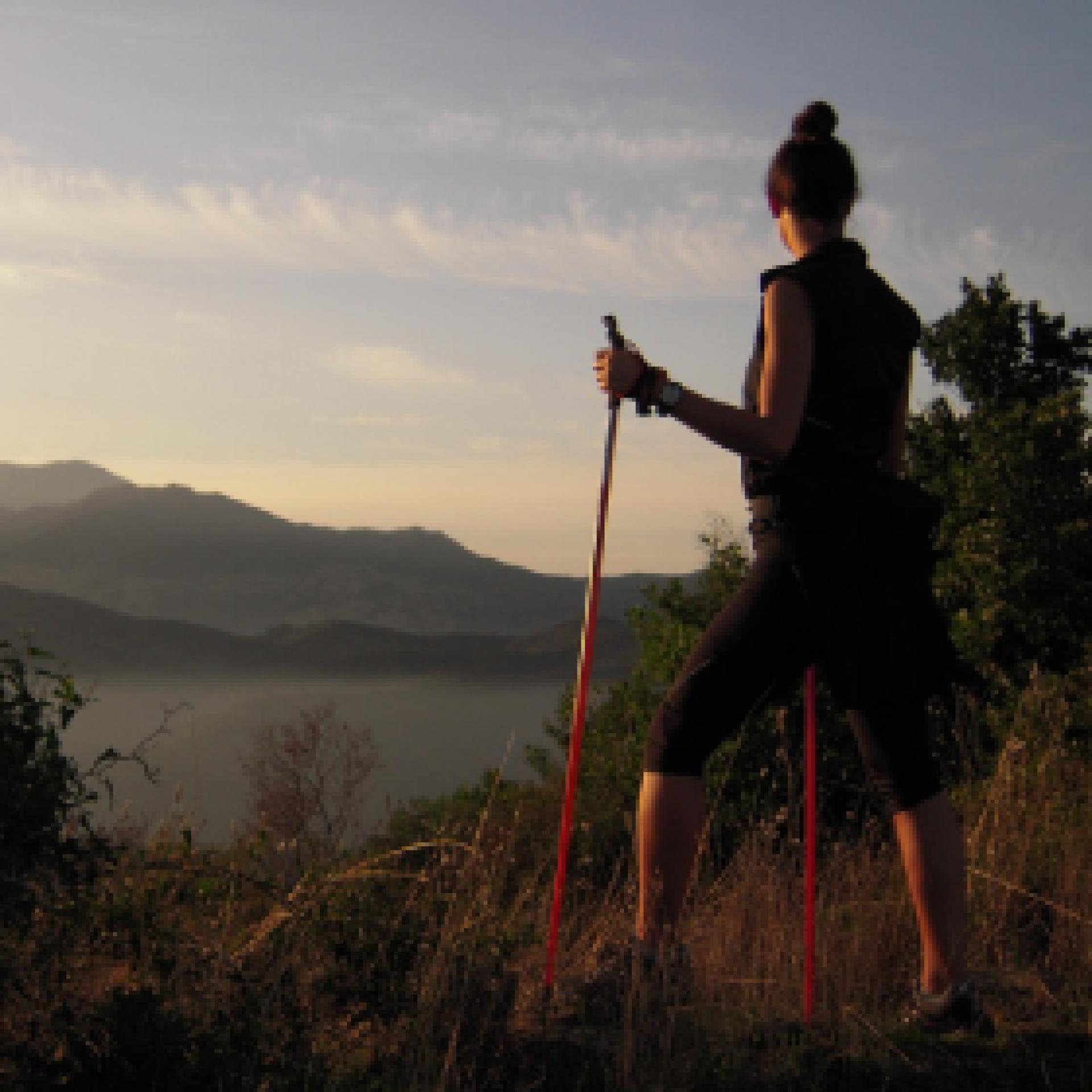Sorgono, the plateau of the Nuraghes. Between history and nature
Access
Take the SS 128, which is the main road of the inhabited centre of Sorgono. At the same level of the Cantina Sociale del Mandrolisai, on the opposite side of the road, wooden signs indicate some archaeological sites. You then follow Via Emilia, turning left at a large fork where you come to another signpost indicating Sentiero Escursionistico (Hiking Trail). Continue along the asphalt road for about 4 km until you come to a sign on the right indicating the Nuraghe Lò. You can park the car here.
Nuraghe Lò
You turn right uphill along a small dirt road, immersed in an Oak forest. After a short stretch, on the left, the beautiful nuragic tower stands out, built on a rocky outcrop formation and placed in a n elevated position. The plan of the structure is slightly elliptical and has the peculiarity of having an architraved window placed at the end of a slightly curved corridor that is in a mirror-image position to the entrance.
Santu Loisu
You descend back to the asphalt road, soon encountering a sign marking the entrance to the forestry yard, which also houses a beautiful nursery. You are now in the locality of Santu Loisu and enter a plot of land to the left of the road, where there are two buildings belonging to a mountain colony and a natual spring. On the right, a small path leads to the domus de Janas of Santu Loisu, consisting of two small chambers at ground level and immersed in a beautiful wood. You return to the tarmac road, continuing for a few hundred metres until you come to an imperceptible bend to the left. On the left of the road, immersed in the woods, is the beautiful tower of Nuraghe Bardacolo, set in a dominant position. Although extremely high, from its summit you can enjoy a wide panorama.
Nuraghe Orrubiu
The route continues on the main road, now slightly downhill. On the right-hand side of the road after a long stretch through the beautiful oak forest. Just before an electrical transformer cabin you come to the sign for Nuraghe Orrubiu, on the right. The beautiful single tower is slightly raised on a ploughed field and owes its name to the reddish mosses that have colonised its beautiful granite stones. Continuing along the main road, you will come across another sign, also on the right, that would allow you to visit a giants' tomb.
S’Incodine
On the left-hand side of the road, before turning back, you will come across a ladder type style that provides access to a vast pastureland. Behind it, near a rocky prominence stands the monument known as S'Incodine (The Anvil), due to its characteristic shape. Not far away, but difficult to find, are the Domus de Janas of Perdonigheddu and the Cherbos nuraghe. You return to the car by the road followed on the outward journey.
- Log in to post comments

